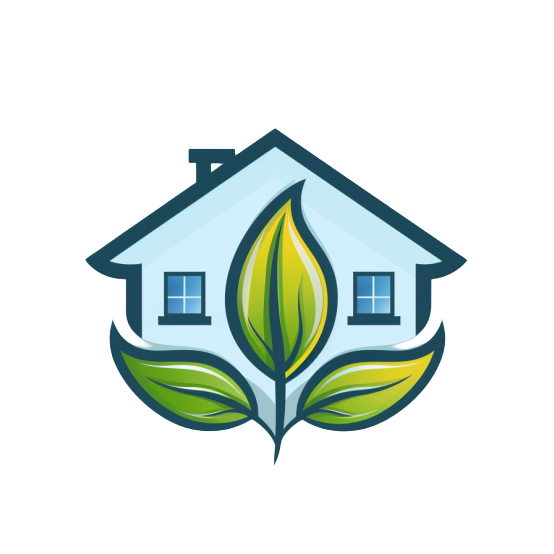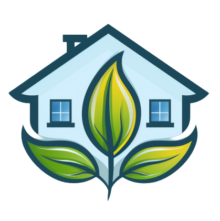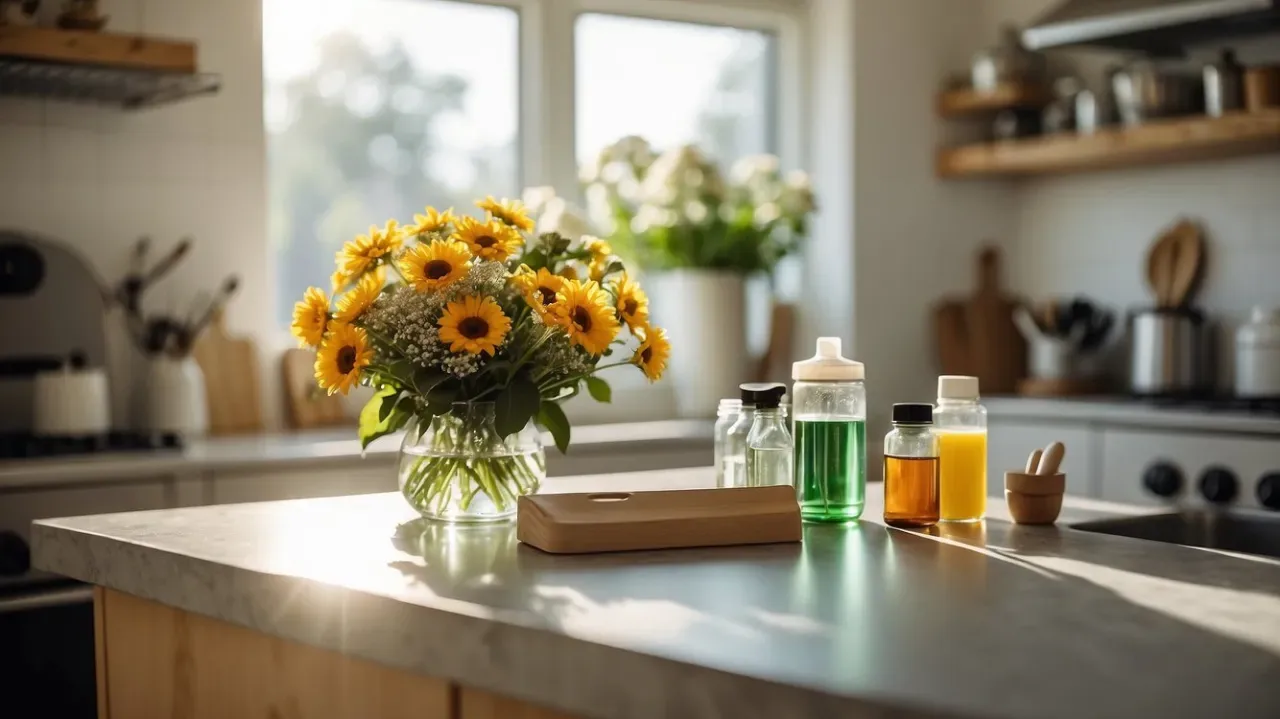Guide to Non-Toxic Cleaning Products: Creating a Healthier Home
Maintaining a healthy home environment is more important than ever, and it starts with the products you use for cleaning.
Switching to non-toxic cleaning products is a simple yet powerful way to reduce exposure to harmful chemicals. These alternatives provide effective cleaning while being safe for your family and the environment.
You might wonder what makes a cleaning product non-toxic.
Non-toxic products avoid harsh chemicals like sulfates and parabens, which can be harmful to both your health and the planet.
Brands such as Puracy and EWG VERIFIED® products are excellent choices for achieving a cleaner, healthier home.
To make informed choices, understanding product labels is crucial.
Look for key indicators of non-toxic ingredients and trusted certifications.
This way, you ensure you’re selecting products that meet high standards of safety and sustainability.
Key Takeaways
- Non-toxic cleaning products reduce exposure to harmful chemicals.
- Understanding labels helps in choosing safe products.
- Trusted brands and certifications guide your choices.
Understanding Non-Toxic Products

When choosing non-toxic cleaning products, it’s essential to understand what makes a product non-toxic, recognize common misconceptions, and know the impact on your health and the environment.
Defining Non-Toxic
Non-toxic cleaning products are designed to avoid harmful chemicals like ammonia, bleach, and chlorine.
Instead, they use safer ingredients such as white vinegar, baking soda, and essential oils.
These components can effectively clean without harming your health.
Non-toxic labels mean that the cleaning products are free from ingredients that can cause serious health issues, such as respiratory problems or skin irritation.
Additionally, these products are typically better for the planet since they don’t release harmful substances into the environment.
Common Misconceptions
One common misconception is that non-toxic always means completely safe.
Some products labeled as non-toxic might still contain elements that can cause mild irritations or allergies.
It’s important to check specific products against trusted resources, like the Environmental Working Group’s EWG VERIFIED ® products, which adhere to strict health standards.
Another misconception is the belief that non-toxic products are less effective.
High-quality non-toxic products, like those from Blueland, use innovative formulations to ensure powerful cleaning without harmful chemicals.
Impact on Health and Environment
Using non-toxic cleaning products can significantly reduce the risk of health issues such as asthma, allergies, and skin conditions.
Traditional products with harmful chemicals can contribute to poor indoor air quality, leading to respiratory problems.
By switching to non-toxic options, you help promote a healthier living environment.
Besides personal health benefits, non-toxic products also positively impact the environment.
They reduce the release of toxic substances into waterways and soil, helping protect wildlife and natural ecosystems.
Brands like Puracy prioritize using organic, biodegradable ingredients that are safe for both you and the planet.
How to Read and Understand Product Labels

Reading product labels can help you make safer and healthier choices for your home cleaning routine. Understanding what’s in your cleaning products lets you avoid harmful chemicals and choose eco-friendly alternatives.
Ingredients to Avoid
When checking labels, there are specific ingredients you should steer clear of.
Be cautious of ammonia, commonly found in glass cleaners, and bleach, often used in disinfectants. Both can cause respiratory issues and skin irritation.
Avoid phthalates, often hidden under the term “fragrance.” They can disrupt hormones and may pose other health risks.
Stay away from formaldehyde, found in some disinfectants and laundry detergents, as it’s a known carcinogen.
Opt for products that explicitly state they are free from these harmful chemicals.
Decoding Labels
Understanding labels can be daunting, but a few key terms can help.
“Non-toxic” implies the product is free from certain harmful substances. However, this term isn’t heavily regulated, so always check the ingredient list.
“Eco-friendly” or “green” usually means the product is better for the environment, but again, verify by looking at the ingredients.
Look for clear instructions on how to use the product safely.
Labels should tell you which surfaces the product is safe for, how much to use, and any ventilation requirements.
Products often list warnings in bold or large print, such as keeping the product out of reach of children.
Certifications to Look For
Certifications can be a reliable way to ensure that a product meets certain safety and environmental standards.
EWG Verified means the product meets the Environmental Working Group’s strict guidelines for health. This label ensures the product is free from EWG’s chemicals of concern and adheres to good manufacturing practices.
Look for Green Seal and EcoLogo certifications, as they indicate sustainable and safer products.
USDA Organic certification on products like soap or dish soap guarantees that the ingredients are organic and not synthetic.
These certifications can make your choices simpler by confirming the product’s claims of being non-toxic and eco-friendly.
Trusted Reviews and Recommendations

For a healthier home, it’s important to choose cleaning products that are free from harmful chemicals. This section highlights some top-rated non-toxic cleaning products and those that deliver effective results while being eco-friendly.
Best Non-Toxic Cleaning Products
One highly recommended option is Puracy. Originating from Austin, Texas, Puracy’s cleaning formulas are free of harsh chemicals and safe for kids, pets, and the environment.
Puracy products are made of at least 98.5% natural ingredients, which ensures a cleaner home without health risks. Read more about Puracy’s products here.
Blueland also stands out for its innovative approach to cleaning.
Their products come in tablet form, reducing plastic waste significantly.
Blueland offers a range of cleaners including all-purpose, bathroom, and glass cleaners.
Simply dissolve a tablet in water, and you’re ready to clean. This makes Blueland products both effective and sustainable.
Bon Ami is another trusted name for non-toxic cleaning.
It is a scratch-free, scent-free cleaner suitable for various surfaces around the home.
From kitchen counters to bathroom tiles, Bon Ami provides a versatile cleaning solution without any harmful chemicals. Check out the full list of the best natural cleaning products here.
Natural Cleaning Products That Work
When looking for natural cleaning products, effectiveness is key.
Branch Basics offers a multi-purpose cleaner that works remarkably well.
The cleaner is concentrated and needs to be diluted, making it long-lasting and economical.
It’s great for nearly every cleaning task, including laundry and surfaces. Branch Basics ensures powerful cleaning while keeping your home safe from toxins.
Seventh Generation is celebrated for its green cleaning products.
Their all-purpose cleaner is derived from plant-based ingredients and cuts through grease and grime effortlessly.
Seventh Generation’s commitment to environmental responsibility makes it a preferred choice among eco-conscious households.
Bona Hardwood Floor Cleaner is perfect for keeping wooden floors spotless.
This water-based formula dries fast and leaves no residue, making it ideal for homes with hardwood floors. It’s available for purchase here.
For those who prefer cloths for cleaning, Dry Rite Microfiber Cloths are excellent for removing over 98% of organic matter just with water.
These cloths are durable and can be used on a variety of surfaces, reducing the need for numerous cleaning products. Find more details on these cloths here.
Practical Tips for Making Informed Choices

When choosing non-toxic cleaning products, it’s crucial to rely on trustworthy information, create your own safe solutions, and engage with communities dedicated to healthy living.
Research and Resources
Start your journey by looking into credible resources.
Websites like Cleano Greengo provide detailed guides on identifying toxic chemicals in cleaning products.
You should also check consumer reports and reviews of non-toxic options.
Pay attention to labels and certifications such as EPA’s Safer Choice or Green Seal. These indicate that the product has met safety and environmental standards.
A Clean Essentials Kit can be a good starting point as it often includes basic, safe cleaning solutions.
DIY Non-Toxic Solutions
Creating your own cleaning products at home can be both safe and cost-effective.
Simple ingredients like baking soda, vinegar, and lemon juice are powerful cleaners.
For example, a mixture of baking soda and hot water is an excellent all-purpose cleaner.
Essential oils can add a pleasant scent to your homemade cleaners and possess natural antibacterial properties.
Castile soap is another versatile cleaning agent that works well for dishes, floors, and even personal care.
Investing in a steam cleaner can also help you sanitize surfaces without chemicals.
Safe Use and Storage

Using non-toxic cleaning products effectively includes not only choosing the right products but also using and storing them safely.
Here’s how to protect your health and maintain a safe home environment.
Understanding Chemical Risks
Cleaning products can contain harmful chemicals like petroleum distillates and VOCs (volatile organic compounds). These substances can cause allergies, irritate the skin, or even contribute to chronic conditions like cancer.
The Environmental Protection Agency (EPA) identifies and regulates many harmful chemicals to protect health and the environment.
It’s important to read labels and understand potential risks. Products labeled as “non-toxic” may still contain chemicals that can irritate or cause allergic reactions.
Knowing what’s in your cleaning products helps you make safer choices for your family and pets.
Best Practices for Safe Use
When using cleaning products, always follow the manufacturer’s instructions for safe use.
Wear gloves to protect your skin from irritation or burns, especially if you have sensitivities.
Ensure your space is well-ventilated to avoid inhaling any fumes or sprays that could affect your respiratory health.
Try using a mix of vinegar and water for cleaning windows and glass surfaces, as it’s effective and avoids harmful ingredients.
Never mix different cleaning products, as this can create dangerous chemical reactions.
Keep an eye out for potential hazards and take steps to minimize risks to yourself and your household.
Proper Storage Guidelines
Storing your cleaning products correctly is crucial for maintaining safety.
Keep them out of reach of children and pets to prevent accidental ingestion or exposure.
Use clearly labeled containers to avoid confusion and potential misuse.
Store these items in a cool, dry place to prevent chemical reactions or spills.
Make sure products are tightly sealed to avoid leaks or evaporation of volatile substances.
Proper storage also means properly disposing of any products you no longer need.
Follow local guidelines for disposal to ensure it’s done in an environmentally responsible way. This helps keep your home safe and maintains a healthier living environment.
Environmental Impact and Sustainability

When choosing non-toxic cleaning products, their environmental impact and sustainability are crucial.
It’s important to consider how they affect the planet, advocate for responsible practices, and select sustainable options.
Environmental Responsibility
Eco-friendly cleaning products can significantly reduce harm to our planet. These products typically use biodegradable ingredients that break down naturally, preventing pollution in water, soil, and air.
Biodegradable products are less harmful to aquatic life and wildlife.
Another aspect to pay attention to is plastic-free and recyclable packaging.
Many eco-friendly brands avoid plastic, opting for materials like glass or cardboard that can be recycled.
By choosing products with sustainable packaging, you help reduce plastic waste in landfills and oceans.
Sustainable manufacturing practices also play a role.
This involves using energy-efficient processes and safe disposal methods.
Brands committed to sustainability often ensure their production facilities minimize carbon emissions and waste.
Advocating for Change
Supporting eco-friendly brands sends a strong message to the market.
When you choose environmentally friendly products, you encourage other companies to adopt similar practices. Public demand can drive industries to reduce their environmental footprint.
You can also get involved in community initiatives that promote green living.
Local clean-up events, recycling drives, and educational workshops can raise awareness about the importance of sustainable cleaning products.
Additionally, sharing your experiences with non-toxic products on social media can inspire others.
Your advocacy can influence friends, family, and followers to make more sustainable choices, further amplifying the positive impact on the environment.
Sustainable Product Choices
Opting for non-toxic, eco-friendly cleaning products involves looking for specific certifications and labels.
The Safer Choice program certifies products with safer ingredients.
Products with the Design for the Environment (DfE) label are also a good choice for antimicrobial products.
Consider products made from recycled materials.
Some brands use post-consumer plastic for their bottles, reducing the need for new plastic production.
You can also find cleaning tools like brushes and sponges made from sustainable materials.
Lastly, look for multi-use or concentrated products that reduce packaging waste.
These options often come in minimal packaging, and you can dilute them at home, cutting down on the number of bottles you buy and recycle.
Exploring Brands and Products

In choosing non-toxic cleaning products for your home, understanding brand philosophies, comparing product effectiveness, and looking for innovative solutions will help you make informed decisions.
Brand Profiles and Philosophies
When it comes to non-toxic cleaning, brands like Blueland and Ecos focus on reducing environmental impact.
Blueland offers refillable cleaning products to minimize waste. Ecos is committed to sustainable manufacturing with carbon-neutral practices.
Method and Grove Collaborative emphasize transparency in their ingredients.
Method uses biodegradable formulas and recycled packaging. Grove Collaborative curates a selection of high-performance, eco-friendly products.
For family-safe options, Dr. Bronner’s and Dropps are great.
Dr. Bronner’s uses organic and fair-trade ingredients. Dropps offers dye-free, fragrance-free laundry pods.
Product Reviews and Comparisons
Blueland’s Clean Essentials Kit includes multi-surface, bathroom, and glass cleaners. All are effective while reducing plastic waste.
Ecos’s all-purpose cleaner is well-loved for its citrus scent and performance on tough stains. It’s also safe for pets and children.
Method offers a stylish, effective multi-surface cleaner available in enticing scents like pink grapefruit and lavender.
Grove Collaborative features products from various eco-friendly brands.
Their partnership with Common Good provides refillable options for hand soap and cleaners.
Dr. Bronner’s castile soap is versatile and excellent for those who prefer minimalistic cleaning supplies.
Similarly, Dropps laundry detergent pods are convenient and gentle on sensitive skin.
Innovative Cleaning Solutions
Blueland revolutionizes cleaning with their tablet-based cleaning system, cutting down single-use plastics. Just add water to their sleek, reusable bottles.
Grove Collaborative offers a subscription model, delivering cleaning kits that tailor to your needs. This ensures you never run out of supplies, saving you trips to the store.
Bon Ami stands out with their powder cleaner made from naturally-sourced ingredients. It’s tough on grime but gentle on surfaces.
It’s Doable!

Choosing non-toxic cleaning products is a simple change that can benefit your health and the planet.
By avoiding harsh chemicals, you contribute to a safer home environment.
Look for products that use ingredients like white vinegar and essential oils.
Brands like Blueland and Puracy offer eco-friendly and effective solutions.
Join a community committed to safer, healthier cleaning choices.
Your informed decisions help protect not only you and your family but also the environment.
Small changes can make a big impact.



